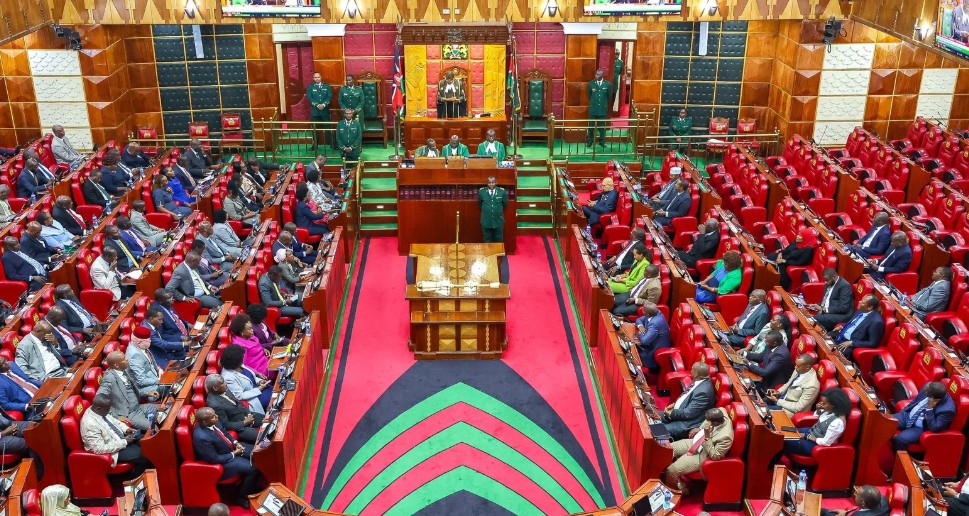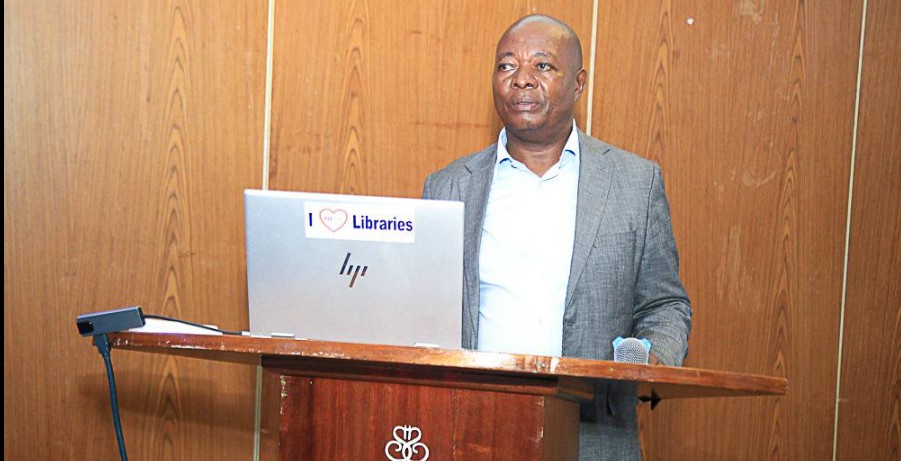Banks oppose CBK plan to peg lending to Central Bank Rate, cite credit access risks

In its proposal, CBK has emphasised the importance of operationalising policy decisions through tools like the interbank rate to ensure stronger transmission of monetary policy signals.
Kenyan banks have raised concerns over a proposal by the Central Bank of Kenya (CBK) to use the Central Bank Rate (CBR) as the main reference rate for bank lending, combined with a regulated lending premium.
The Kenya Bankers Association (KBA) has argued that this proposal could limit the flexibility of lending practices, potentially undermining the accessibility of credit for small businesses and low-income borrowers.
More To Read
- Most Kenyan employers to freeze hiring in 2025 despite economic optimism – CBK survey
- SRC controversy casts shadow over Moturi's Central Bank board nomination
- Banks face additional reporting rules as sector moves to spur green credit growth
- CBK, commercial banks disagree over benchmark for determining lending rates
In a statement, the association expressed its reservations, noting that the proposed framework could lead to interest rate caps.
These caps, according to KBA, could negatively affect access to credit, particularly for micro, small, and medium-sized enterprises (MSMEs) and other vulnerable groups.
Historical data from 2016 to 2019, they pointed out, shows that rate caps have historically reduced credit availability, especially in underserved sectors.
“We appreciate the Central Bank of Kenya’s continued engagement with stakeholders on credit pricing reforms,” said KBA, led by CEO Raimond Molenje.
“However, the proposal undermines CBK’s own monetary policy transmission by disconnecting lending rates from prevailing market conditions,” the statement added.
The banks have instead proposed adopting the interbank rate as a market-driven base reference rate.
KBA believes this would better reflect global best practices and offer more flexibility for banks to price risk appropriately across various customer segments.
They argue that limiting banks’ ability to price based on market conditions could hinder their efforts to meet the target of advancing Sh150 billion annually in new loans to small businesses between 2025 and 2027.
However, the Central Bank of Kenya has defended its proposal, arguing that it seeks to address concerns about high lending rates and the complexities of current credit pricing models.
CBK Governor Kamau Thugge emphasised that the new framework would make lending rates more transparent, tackling fears about hidden or unclear pricing mechanisms. Thugge added that this would create a more market-driven structure for determining credit risk.
Find solutions
Despite their opposition to the CBK proposal in its current form, KBA has expressed willingness to work with the Central Bank to find solutions that promote transparency, sustainable lending practices, and better access to affordable credit for all Kenyans.
Under the CBK’s proposed changes, the current risk-based credit pricing model (RBCPM) would shift to a framework based on the Central Bank Rate.
However, KBA maintains that the interbank rate, a market-based benchmark, would be a more appropriate reference point.
The KBA’s stance is rooted in global practices, pointing to established short-term market rates like the SOFR (USA), SONIA (UK), and EURIBOR (EU) as examples of how market-driven rates work efficiently.
The bank association also expressed concern about the absence of a clear strategy to incorporate the interbank market corridor in the proposal, a key element of CBK’s monetary policy framework.
“This raises concerns about whether CBK has abandoned the interest rate corridor and whether the market should continue to consider the interbank rate as the operational target for monetary policy,” the statement added.
In its proposal, CBK has emphasised the importance of operationalising policy decisions through tools like the interbank rate to ensure stronger transmission of monetary policy signals.
The KBA, however, argues that by shifting to the CBR as the primary reference rate, the Central Bank would fail to address these concerns, leading to weaker transmission of monetary policy.
KBA has also rejected the notion that the cost of funds for banks is determined solely by the CBR, pointing out that the rate of return on commercial bank deposits is instead influenced by depositors’ assessment of the opportunity cost of investing in government securities, which is reflected in Treasury bill rates.
While KBA does not fully support the CBK’s proposal, both parties agree on the need for credit pricing reforms that ensure fairness, transparency, and a more inclusive financial system.
The Central Bank of Kenya is still committed to establishing a framework that can adapt to evolving market conditions and provide sustainable lending options for borrowers.
In recent months, CBK has raised concerns about the stagnation of commercial bank lending to the private sector.
Despite a reduction in the base lending rate since August 2024, bank lending has grown only modestly, with a 0.2 per cent increase in March 2025 compared to a contraction in February.
To address this, CBK has taken steps, including onsite visits, to encourage banks to lower their lending rates and increase access to credit.
Top Stories Today










































